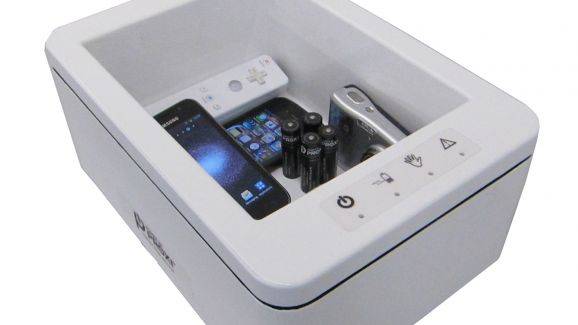
Wireless charging is a feature we’d like to see on more phones, but it’s just not being implemented quickly. Part of that has to do with competing standards, and a fragmented space. today, the A4WP and PMA, tow of the larger wireless churning powers, have announced they’ve signed an agreement to work together. It’s great news, but leaves another out in the cold.
The Alliance for Wireless Power (A4WP) and Power Matters Alliance (PMA) have signed an agreement to allow their technology to work using the same satandard. That doesn’t mean they are combining efforts, per se, just that they’re ready to move forward with the same standards, hopefully bringing their charging technology to more devices. A common certification process should bring one — if not both — charging standards into mainstream use.
Kamil Grajski, president of the A4WP said “We believe that companies that have been evaluating and hesitating to integrate wireless charging into their consumer electronics products will now have a reason to go forward”. Though a step in the right direction, it leaves the Wireless Power Consortium (WPC) out. The WPC utilizes Qi, which is one you see on various devices currently. Though nobody is clear on just what the WPC will do in response to this announcement, they have options.
The agreement is not limited, and the WPC can join up to streamline the process for OEMs wishing to implement wireless charging. With a single standard, the choice then becomes which process is the right one for each device, which will naturally vary. This decision might fragment the wireless charging space in a new way, but it also serves as a long-term fix to a problem starting to spiral out of control.
Update: The WPC commented on the merger. Don’t hold your breath for them to join in the fun:
When there’s a dominant player like Qi in the market, it’s not surprising to see some consolidation among smaller players. In the end, only one standard will survive.
However, the announcement made by PMA and A4WP is not that they are merging groups. They both are filling gaps with technology the other didn’t have. And they both will continue to operate separately as far as we know. So in this case, one plus one doesn’t equal a better one. One plus one equals a more complicated two.
PMA, could not develop resonance in a way that worked with its inductive chargers; and PMA’s networking technique was likely attractive to A4WP. That’s not the case with A4WP optionally using PMA technology and vice versa. This type of sharing does not make things better for the consumer and likely makes it far worse because it creates more compatibility issues.
Qi innovates with resonance and networking capabilities, and there are more than 400 Qi products in the global market. The one core promise Qi makes to consumers and industry is this: When you buy Qi, you know it works today, tomorrow, and will continue to in the future, with whatever features and advances evolve.” – John Perzow, Vice President of Market Development for the WPC
VIA: CNET










“…but it also serves as a long-term fix to a problem starting to spiral out of control.”
Huh? Hasn’t the market already adopted a standard?
I see several dozens Qi devices on the market and VERY few from A4WP or PMA.
Pretty much the way I see it, this is a very negative move as Qi is pretty much everywhere now.
tow of the larger wireless churning powers = two of the larger wireless charging powers